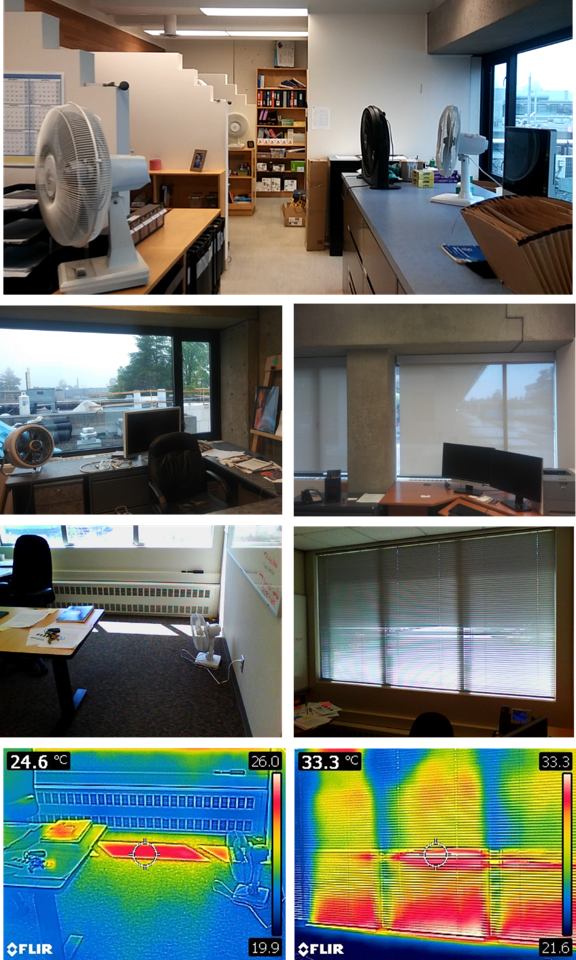The fundamental assumption of the adaptive thermal comfort model is expressed by the adaptive principle: “if a change occurs in the environment such as to produce discomfort, people respond in ways that tend to restore their comfort.”
Nicol F., M. Humphreys, S. Roaf S. 2012. Adaptive Thermal Comfort: Principles and Practice. Routledge.
If embraced, human thermal adaptation principles can be planned and incorporated in designs to help occupants’ achieve thermal comfort using low/no mechanical energy: http://annex69.org/index. Otherwise, occupants will take comfort in their own hands…

Figure 1. Avoiding glare from ceiling lights and skylights
Figures 2 and 3, show two offices belonging to the same north-facing zone in a building, and served by a single fan-coil unit. As seen in the figures, some offices in the zone are interior (Figure 2), while other offices have windows (Figure 3). A single occupant-adjustable thermostat, located in a perimeter office with window, controls all offices. Obviously, the fan-coil unit cannot meet the different occupants’ thermal requirements from both zones at the same time. So occupants take comfort in their own hands. Anecdotally, the office occupant in Figure 2 keeps a bottle of warm water for drinking when cold, uses a personal heater, and takes walks upstairs to relieve cold body numbness.

Figure 2. Protection from mechanical air drafts

Figure 3. Personal heater (300 W)
The images below are examples from different offices in various buildings of how occupants cope with thermal discomfort. The common factors from the images below is that none of the occupants’ actions in were originally planed by design. Using fans is a suitable strategy to maintain comfort, as well as using blinds. However, the proper selection and use of these strategies can be carefully analyzed and planned (i.e. ASHRAE Standard 55-2017) as part of an integrated design approach.
The top image is an office shared by three people, with electrochromic dynamic glazing windows. While two of the occupants wanted to maintain a high tint level of glazing to minimize solar gain for thermal comfort, the third occupant did not want to sacrifice daylight and summer view and therefore preferred low tint glazing setting. Therefore, after some informal negotiations between them, they decided to leave the tint setting to a fixed intermediate level and use personal fans to help achieve thermal comfort.

Figure 4. Unplanned occupants’ actions to cope with thermal discomfort